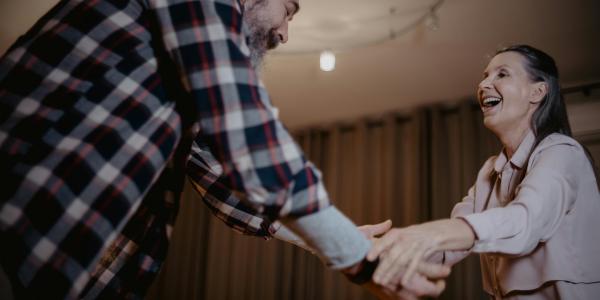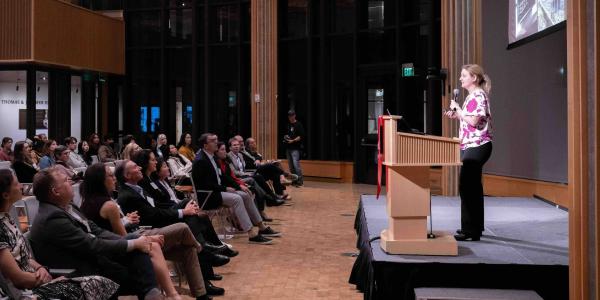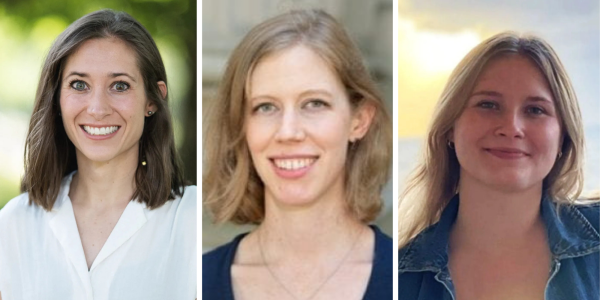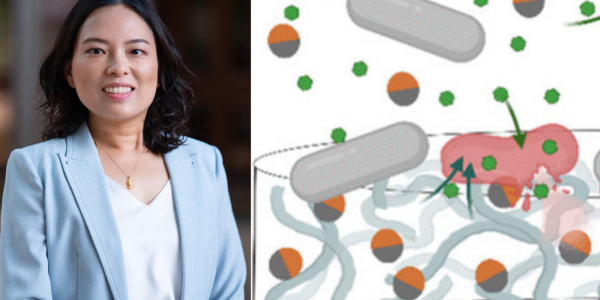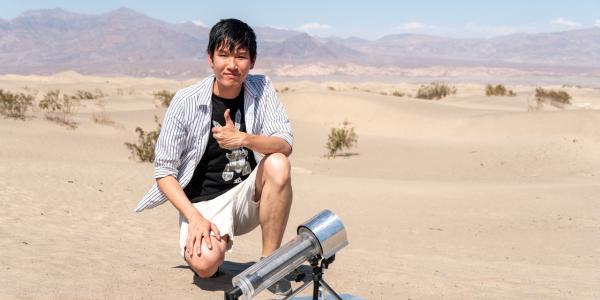A postdoctoral fellow in Psychological & Brain Sciences went back to the ’90s to study the fabric of long-lasting marital love.
Poets, songwriters, and novelists aren’t the only ones searching for the meaning of love. Because romantic relationships can be such a powerful force in people’s lives, it’s also a promising area of study for psychologists. But before researchers can dive into the nuances of love, they must know what it looks like.

A new study led by Jocelyn Lai, a postdoctoral fellow in the Department of Psychological & Brain Sciences, took a fresh look at old videos of couples who had been married for decades to track the tell-tale signs of love.
The 148 couples in the study were filmed in the late 1980s and early 1990s. At the time, the participants were in their early 50s on average and had been married for an average of 30 years. In addition to the videos, the couples filled out extensive questionnaires describing their marriages and how they viewed their partner. During the filmed interactions, they wore monitors that measured heart rate and other physical responses.
With cameras rolling, the couples were asked to have a 15-minute conversation about a topic of conflict within the relationship, such as money issues or whether they should move closer to their children. Even in that setting, the most in-love couples managed to show plenty of affection.
Love can take many forms, but Lai and colleagues were specifically looking for non-verbal gestures, such as synchronized head tilts and nods, genuine smiles, and inward leans. They also looked at how couples rated their partner on love-related adjectives such as “loyal” or “warm.”
These gestures and descriptors point to feelings of “positivity resonance,” a term coined by Barbara Fredrickson, a psychologist at the University of North Carolina at Chapel Hill and a co-author of the new study. “Positivity resonance is the shared, collective experience of positive emotions and expression of mutual warmth between two or more people,” Lai said. “It’s theorized to reflect the emotion of love, but we haven’t tested this theory until now.”
In the new study, Lai and colleagues found that behaviors and verbal expressions that capture positivity resonance predicted the levels of love described by the couples. In other words, their love was on full display for anyone who knew where to look.
Old videos may seem like an unusual resource for a modern psychological study, but Lai explained it made sense to look back in time. The original study had been constructed by the initial investigators — Robert Levenson at the University of California, Berkeley; Laura Carstensen at Stanford University; and John Gottman of the Gottman Institute — to provide a wealth of data from marriages across the spectrum, from happy to miserable.
Conducting this kind of marriage study today can be difficult, time-consuming, and expensive, Lai said. “It can be especially challenging to recruit people for a partner study,” she said. “We’re just finishing up data collection, recruiting couples for a project here at WashU led by Associate Professor Tammy English, and people are sometimes hesitant to participate in a study with their partner.”
The filmed sessions took place more than 30 years ago, but much like a classic movie, the takeaway messages still resonate, Lai said. “Positivity resonance is somewhat timeless,” Lai said. “The way people experience and show this phenomena is likely similar whether they’re older or younger, or whether it’s the early 1990s or today.”
Couples of any age can strengthen their relationships by making a conscious effort to build and promote positivity resonance, Lai said. “It’s really about moments of love and care,” she said. “It’s important for people to find opportunities to experience positive emotions together. Finding shared activities or setting aside time to talk can all foster positivity resonance.”
Header image credit: Mikhail Nilov/Pexels

